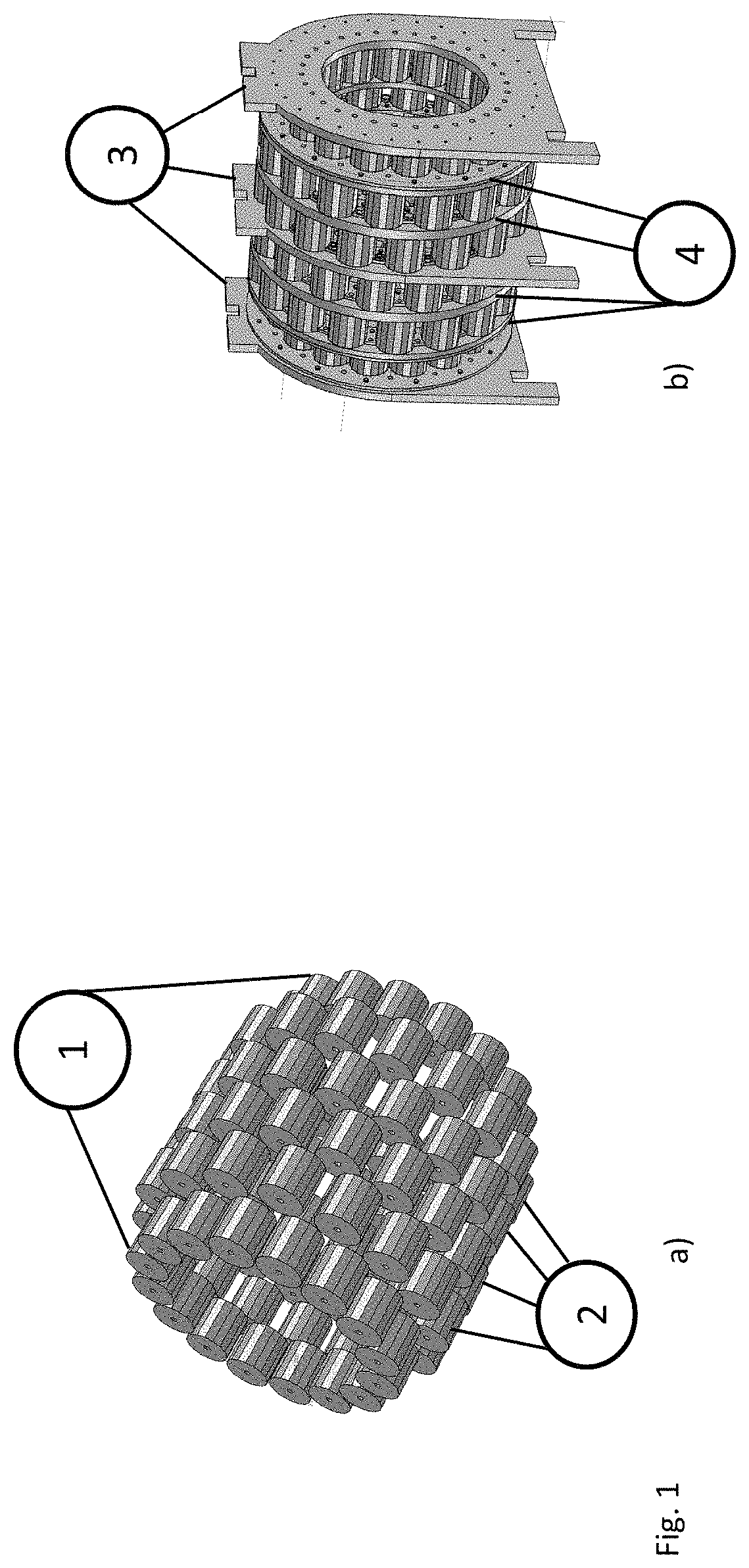Magnet assembly for MRI comprising cylindrical rings of halbach type
a technology of halbach type and magnet assembly, which is applied in the field of systems and methods for imaging by magnetic resonance, can solve the problems of increasing the complexity and empirical effect of the shimming procedure, and increasing the size and weight of the magnet, so as to reduce the effect of the finite length of the magn
- Summary
- Abstract
- Description
- Claims
- Application Information
AI Technical Summary
Benefits of technology
Problems solved by technology
Method used
Image
Examples
Embodiment Construction
: MAGNET CONSTRUCTION
[0037]The magnet, whose preferred embodiment is shown in FIG. 1, is formed by 6 Halbach rings divided into two subgroups, the inner rings (2) and the two outer rings (1). Each ring has 16 blocks of cylindrical shape with hexadecagonal base (FIG. 1). The magnetization of the blocks is perpendicular to the cylinder axis and directed towards the center of one of the faces. The orientation of the magnetization of the rings is such as to perform a rotation of 720° within one revolution. A magnet located in the angular position α will therefore have an orientation of magnetization equal to 2*α.
[0038]As shown in FIG. 4 the inner rings have the same radius while the end rings are placed at a smaller radius so as to partially compensate for the effect of the finite length of the magnet. The supports that hold the magnet are aluminum. The rotation of the magnetization on each ring confines the magnetic field within the magnet and does not need an iron structure nor as a y...
PUM
| Property | Measurement | Unit |
|---|---|---|
| diameter | aaaaa | aaaaa |
| diameter | aaaaa | aaaaa |
| diameter | aaaaa | aaaaa |
Abstract
Description
Claims
Application Information
 Login to View More
Login to View More - R&D
- Intellectual Property
- Life Sciences
- Materials
- Tech Scout
- Unparalleled Data Quality
- Higher Quality Content
- 60% Fewer Hallucinations
Browse by: Latest US Patents, China's latest patents, Technical Efficacy Thesaurus, Application Domain, Technology Topic, Popular Technical Reports.
© 2025 PatSnap. All rights reserved.Legal|Privacy policy|Modern Slavery Act Transparency Statement|Sitemap|About US| Contact US: help@patsnap.com



